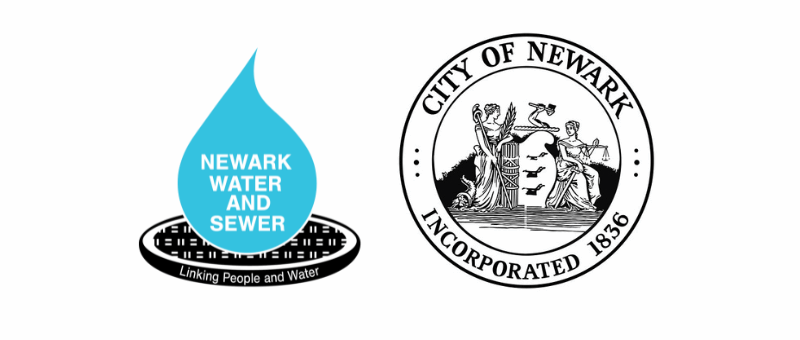Newark is investing in stormwater upgrades
As climate change brings heavier rainfall, higher storm surges and vicious winds, Newark’s Water and Sewer Utility is taking an umbrella approach to protect its residents.
Since 2018, the utility has spent $25 million in infrastructure improvements to bolster low lying areas, mitigate the impacts of combined sewer overflows (CSOs) and educate residents about the small things they can do to prevent flooding in their neighborhood.
Looking back 13 years, Hurricanes Sandy, Irene and Ida not only caused severe flooding and significant damage in areas near the Newark Bay and Passaic River, but also in higher ground areas where heavy rainfall overwhelmed the stormwater systems.
“Climate change is here, and we are adapting accordingly to make sure our system can handle these changes,” said Chief Supervising Engineer Mohammad Inti Athar, PE. “Hurricane Ida showed again that flooding is a growing concern in dense urban areas like Newark. We are responding with major infrastructure projects, as we did after Hurricane Sandy, to prevent this from happening again.”
Among Newark’s sewer and stormwater improvements include four noteworthy projects. First, the $10 million Ivy Hill Stormwater Mitigation Plan will add over 2,000 linear feet of 42-inch diameter pipes, additional equalization pipes and more storm drains for improved drainage in the area previously impacted by Hurricane Ida. This project, aimed for completion in Spring 2027, is funded by the Department of Housing and Urban Development’s Disaster Recovery program.
“These proposed additions will capture excess surface runoff from the Ivy Hill area, making it much more resilient to heavy storms,” Mr. Athar said.
Comparably, in 2022, Newark completed $3.4 million drainage improvement on South Street and Adams Street, another known flood zone in Newark’s East Ward.
“Our projects have remarkable outcomes,” Mr. Athar continued. “We see little to no flooding after completion, which shows that our investments are working to protect our communities.”
In the spring of 2025, Newark completed the $4.1 million Peddie Ditch Netting Facility, which will mitigate the impact of combined sewer overflows by preventing trash and debris from entering Newark’s waterways.
Peddie Ditch is equipped with eight mesh nylon nets that catch litter and debris from entering and polluting the nearby Passaic River. In tandem, this also prevents flooding in the flat, low-lying area of Frelinghuysen Avenue and East Peddie Street, previously hard-hit by Hurricane Sandy.
“Peddie Ditch will improve water quality going back into our rivers”, said Newark Water and Sewer Director Kareem Adeem. “Every one of our outfalls has either a netting facility or a screening facility to reduce contamination and keep our waterways clean.”
Similarly, in 2018, Newark completed the rehabilitation of the Queen Ditch Netting Facility, virtually ending 30 years of flooding on Frelinghuysen and Meeker Ave.
“With the support of low-interest financing from the NJ I-Bank, we are able to bring flood mitigation projects like these to the finish line, and Newark residents are protected,” Director Adeem said.
For more natural solutions to flooding, Newark launched its RainReady program in 2024 to implement green infrastructure throughout the city and increase the amount of pervious surfaces, where rainwater can soak into the ground. This program achieves the target 85% runoff capture as outlined in the DEP-mandated Long Term Control Plan (LTCP).
“Newark is a high-urban area with lots of impervious surfaces like asphalt roads, sidewalks and rooftops”, says Newark Principal Engineer Marina Shenoda. “Over the next decade, residents will see more green space that mitigates flooding, beautifies the city and reduces the urban heat island effect.”
From rain gardens to permeable pavements to planting more trees, over 120 sites throughout Newark have been identified as potential green infrastructure sites. Ten sites are fully designed and will be constructed in the next two years.
Looking ahead to the next decade, Newark plans to establish a stormwater utility to ensure that sufficient resources are allocated to reinforce and maintain Newark’s stormwater system.
“We are adapting to the needs of Newark residents”, said Director Adeem. “All that we do aims to protect the health and safety of our community. We continue to invest in stormwater projects to prepare a more resilient Newark for the next generation.”
For more information on Newark’s stormwater management projects, visit water.newarknj.gov.

By Julissa Coplin. She is the Public Information Officer at the Department of Water & Sewer Utilities in Newark, New Jersey. She may be reached at Coplinj@ci.newark.nj.us
This article is featured in the October issue,




